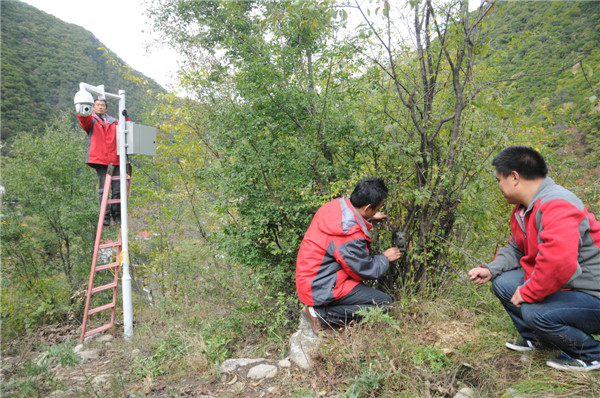New wireless eyes on pandas in the wild
 |
|
Staff members from Heihe National Forest Park install surveillance and infrared cameras in essential places to monitor the behavior of tourists as well as wild animals.[Photo by Xu Lin/China Daily] |
"But there are new threats such as the interference of tourism development and habitat separation caused by infrastructure projects including roads, rails and dams. The challenge is how to balance these demands and protect the precious animals," says Wan Hui, the director of WWF's giant panda program.
"It's effective to manage the habitats with better information. It means there will be huge amounts of data about the habitats, animals and plants. In animal-protection work, technology can help human beings do what they cannot do," Wan says.
The habitats in Sichuan and Shaanxi are close to tourism sites and the main focus would be to monitor human traffic and educate tourists. WWF has community projects to help the local residents to make a living, such as hosting environment-friendly farm stays.
Each April and July, the forest rangers take 27 fixed routes in the Heihe park's remote woods to collect data about wild animals-including their excreta, hair and animal sightings-and analyze them to estimate the number of animals.
Organizers of the demonstration program set up about 30 infrared cameras in the woods that take photos automatically when a living being passes by.
"In the past, we took photos of wild animals if we bumped into them while collecting data. The infrared cameras work day and night, and make it more likely to capture their precious images. Moreover, we can trace the scope of their activity and life habits because we know the positions of the cameras," says Wang Pengzhou, 38, a forest ranger of the park.
Forest ranger Li Xifeng couldn't agree more.
"Our workload has been reduced greatly. We collect the data in the infrared cameras once a month. They can also work as a deterrent to those who want to cut down trees or hunt animals," he says.
Li has to patrol for about 24 days each month, including inaccessible places deep in the forests. It takes about three or four days for him to patrol around the regions he's in charge of. He would take simple food and water and stay in tents or farmers' houses.
"It can be dangerous sometimes because there are venomous snakes. I would try my best to avoid wild animals in case there are conflicts. They would rarely take the initiative to attack human beings except on special occasions, such as when they just give birth to babies," he says.
It's estimated that there are more than 10 wild giant pandas in the remote woods of the park. It's not likely that tourists would see them. Last year, a wild giant panda appeared in a village nearby but soon left.
In 2000, the local government started planting more trees and expanding forest protection in the area. Since then, the number of wild animals in the area has increased every year.
"Compared with the past, cutting down trees and illegal hunting are rare, and the local villagers have become aware of the importance of wild animal protection. They will call us if they find a wild animal," Wang says.
















